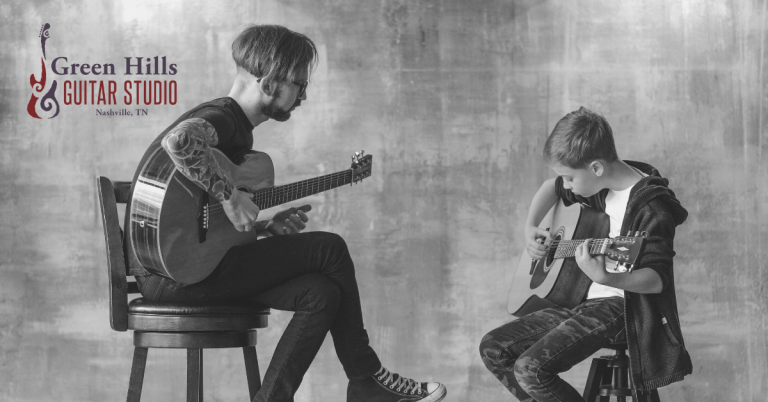7 Chord Substitutions To Improve Your Progressions
If you’ve been playing guitar for a while, you might be feeling stuck with the same old chord shapes and progressions. G, C, D, Em—rinse and repeat. They work, sure. But they start to sound like cardboard after a while. You don’t need to know jazz theory or advanced harmony to spice things up. You just need a few simple chord substitutions.
In this lesson, we’ll cover seven easy chord swaps that will instantly add flavor, color, and creativity to your songs. These substitutions are perfect for intermediate players and songwriters looking to level up their chord progressions without getting lost in theory.
Let’s dive in.
When to Use These Chord Substitutions
You might be wondering: when is the right time to use a chord substitution? Here’s the good news—you don’t have to change everything to make your song sound fresher.
Try these ideas:
- Verses: Use substitutions to create subtle tension and variation that draws the listener in.
- Choruses: Apply brighter or more emotional chord swaps (like add9 or IVmaj7) to lift the energy.
- Bridges: A great place to use more adventurous moves like secondary dominants or suspended chords.
- Turnarounds or endings: Dominant 7 chords or relative minor swaps work beautifully here to refresh a common resolution.
Substitutions work best when they serve the vibe. Ask yourself: Does this make the emotion stronger? If the answer is yes, you’re doing it right.
1. Swap Major for Relative Minor
Example: C major → A minor
Every major chord has a buddy—the relative minor. They share the same notes, but the emotional color shifts dramatically. When you move from C major to A minor, you’re stepping into more reflective territory. It’s like turning a sunny afternoon into a golden hour moment.
Theory tip: The relative minor is always three semitones below the major. In C major (C–D–E–F–G–A–B), A minor uses the exact same notes. You’re simply starting the scale from a different root (A instead of C), which changes the harmonic center.
Try it in a progression: Instead of C – G – F, try Am – G – F. Suddenly, it feels moodier and more introspective.
Songs that do this well:
- “Boulevard of Broken Dreams” by Green Day
- “Tears in Heaven” by Eric Clapton
Why it works: The relative minor keeps things familiar but adds a new emotional dimension. It’s a great way to deepen a happy-sounding progression without losing coherence.
2. Add a Dominant 7 for Grit and Tension
Example: G → G7
Dominant 7 chords bring tension and drama. They’re the storytellers in your progression—the moment before resolution, like a character at a crossroads. Swapping a plain G for G7 turns up the emotional tension.
Theory tip: A dominant 7 chord is built from the root, major third, perfect fifth, and a minor seventh. In G7, that’s G–B–D–F. That F natural (the minor 7) is what adds the tension—especially when resolving to a C major (G7 → C).
Try it in a progression: C – F – G7 – C. The G7 practically begs to return to C, making the resolution deeply satisfying.
Songs that use this well:
- “Stand By Me” by Ben E. King
- “Let It Be” by The Beatles
Why it works: It adds spice, bluesy grit, and a sense of movement. Dominant 7s are your best friend when you want a little more soul.
3. Use Add9 or Add2 for Sparkle
Example: C → Cadd9
When a regular major chord feels too plain, adding the 9th (or 2nd) gives it a shimmer. It’s like adding just a pinch of salt to bring a dish to life. The chord still sounds major—but with a breath of fresh air.
Theory tip: An add9 chord adds the 9th scale degree to a major triad. In Cadd9, that’s C–E–G–D. The D (the 9th) adds color without changing the chord’s function—it’s not a sus or extended chord, just a little sonic bonus.
Try it: G – D – Cadd9 – G. That subtle color change lifts the whole progression.
Songs that use this well:
- “Good Riddance (Time of Your Life)” by Green Day
- “Wonderwall” by Oasis
Why it works: It’s simple, beautiful, and full. Add9 chords sound more open and modern while staying easy to play.
4. Minor to Minor 7
Example: Dm → Dm7
Minor 7 chords are like the relaxed cousin of minor chords. They’re chill, soulful, and full of feel. Swapping Dm for Dm7 gives your progression a laid-back, R&B-ready vibe.
Theory tip: A minor 7 chord is built by adding a flat 7 to a minor triad. In Dm7, you have D–F–A–C. The C adds warmth and harmonic richness, connecting well to both G and C major.
Try it: C – Dm7 – G – C. The Dm7 smooths out the transition and adds warmth.
Songs that use this well:
- “Ain’t No Sunshine” by Bill Withers
- “Just the Two of Us” by Grover Washington Jr.
Why it works: You’re not changing much physically, but you’re deepening the emotional palette. It’s a small move with big results.
5. Swap the IV for a IVmaj7
Example: F → Fmaj7
Maj7 chords sound nostalgic and cinematic. Swapping out a basic IV chord for a IVmaj7 gives your progression that dreamy, reflective glow. It’s like a slow-motion shot in a movie montage.
Theory tip: A major 7 chord is made of a major triad plus a major seventh. In Fmaj7: F–A–C–E. That E natural (the major 7th) adds a lush, floating quality—especially effective when moving between tonic and dominant chords.
Try it: C – Fmaj7 – G – C. That one note change adds lushness.
Songs that use this well:
- “Something” by The Beatles
- “Every Breath You Take” by The Police
Why it works: Maj7 chords feel elevated—great for adding depth, sophistication, or a gentle twist to a familiar sequence.
6. Try a Suspended Chord Instead of Major
Example: G → Gsus2 or Gsus4
Suspended chords feel open and unresolved. When you swap a regular major for a sus2 or sus4, it creates tension—like you’re holding your breath. Then resolving back to the major lets you exhale.
Theory tip: A sus2 replaces the 3rd of a major chord with the 2nd (G–A–D), and a sus4 replaces it with the 4th (G–C–D). Because the 3rd is what defines major or minor quality, removing it creates ambiguity and tension.
Try it: D – C – Gsus4 – G. You’ll hear that satisfying fall into place.
Songs that use this well:
- “Free Fallin'” by Tom Petty
- “Pinball Wizard” by The Who
Why it works: Suspended chords build anticipation. They’re perfect for intros, pre-choruses, or anywhere you want to stretch the tension.
7. Use a Secondary Dominant
Example: Add a D7 before a G in the key of C
This move is like sneaking in a temporary key change. A secondary dominant is the V7 of any chord other than the tonic. In C major, D7 is the V of G. It’s like handing off energy mid-progression.
Theory tip: In the key of C, the diatonic chord built on D is D minor. But using D7 introduces F#—a note outside the key—which creates a pull toward G major. This tension and release gives the progression a boost in momentum.
Try it: C – D7 – G – C. The D7 intensifies the arrival at G.
Songs that use this well:
- “Hey Jude” by The Beatles
- “I Will Survive” by Gloria Gaynor
Why it works: It boosts momentum and creates a sense of direction. You’re giving the listener a little harmonic detour—and it makes the resolution feel earned.
Bonus: Borrow from the Parallel Minor
Example: Use an Ab major chord in the key of C major
This is a favorite among seasoned songwriters. Borrowing a chord from the parallel minor means taking a chord that belongs to C minor (the parallel minor of C major) and using it in C major. This instantly adds drama and surprise.
Theory tip: In C major, the chord Ab doesn’t naturally occur. But in C minor, it’s the VI chord. Borrowing it gives you a bold, soulful sound. The unexpected nature makes it feel cinematic.
Try it: C – Ab – F – G. That Ab changes the whole mood.
Songs that use this well:
- “Nights in White Satin” by The Moody Blues
- “Something” by The Beatles (again!)
Why it works: It adds darkness or richness to a progression that might otherwise feel too cheerful. This is a subtle way to bend tonality and make your harmony more expressive.
Closing Thoughts
You don’t need to reinvent the wheel to write better chord progressions. You just need to experiment. Try one or two of these chord substitutions in a progression you already know. Notice how the vibe changes. Explore what happens.
These seven (plus one!) substitutions are used in hit songs across decades and genres for a reason. They add dimension and emotion. Add them to your toolkit and you’ll start hearing music—and writing it—a little differently.
Want help exploring these in your own playing? Schedule a lesson with Green Hills Guitar Studio. We teach in-person lessons here in Nashville and online to students anywhere. Whether you’re writing songs, tightening up your rhythm, or exploring new sounds, we can help you grow your voice on the instrument.
We offer:
- Guitar lessons in Nashville, TN
- Online lessons wherever you are
- Learn guitar online with self-paced courses
- All Access Pass for unlimited learning
Ready to play smarter?
Contact Green Hills Guitar Studio today and get started.






